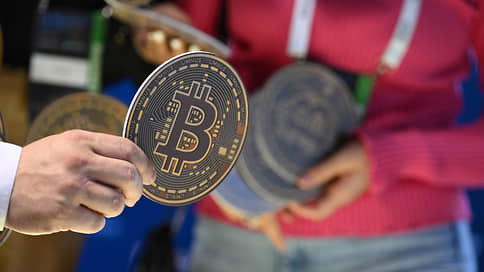With wallets to go out – Newspaper Kommersant No. 180 (7381) dated 09/29/2022
[ad_1]

Experts note a noticeable increase in the interest of Russians in buying cryptocurrencies and hardware crypto wallets (having a physical medium). The reason for the surge was the partial mobilization and mass exodus of citizens from Russia. However, analysts say, the hype is not yet comparable with the spring. And the purchased cryptocurrencies carry the risks of depreciation and liquidity restrictions.
The demand for cryptocurrencies, primarily for the stablecoin USDT (cryptocurrency pegged to the US dollar), in Russia went up sharply after the announcement of partial mobilization on September 21, experts interviewed by Kommersant said. At the same time, the quotes of this cryptocurrency also rose sharply – the premium for USDT when buying reaches an average of 10% of the dollar exchange rate on the Moscow Exchange (63–64 rubles for USDT).
As Roman Nekrasov, co-founder of the ENCRY Foundation, explained, most often exchanges are made on p2p exchanges like Binance or Garantex, and this can be confirmed by their announcements. In particular, on Binance, the number of offers that allow you to buy large lots has significantly decreased. Sellers also indicated small amounts as an available reserve – up to 20-30 thousand USDT. “It is difficult to buy even one million USDT at a time, more often they sell in small lots for a couple of thousand USDT,” the expert notes. Most often, stablecoins are bought by those who urgently need to withdraw a large amount, more than $50,000 allowed for cash export, market participants indicate. “There is no clarity with SWIFT, payments sometimes hang up, are rejected by the receiving bank. With USDT, everything is clearer in terms of reliability,” explains Mr. Nekrasov.
According to market participants, the demand for the purchase of hardware crypto wallets has also increased. This was confirmed by the manufacturer Tangem. On the Ozon marketplace, since September 20, daily sales volumes have tripled – from 300 thousand rubles. up to 911 thousand rubles. “And this is only a small part of the market,” – said the representative of the company. At Wildberries, volumes remain at the level of 500 thousand rubles. per day, evaluates the Moneyplace service.
However, the excitement is not yet as great as in the spring (see Kommersant of September 13). The head of the investment department of ICB Fund Aaron Chomsky notes the weakening of the interest of Russian citizens in digital assets compared to a surge in March amid sanctions threats and in June-July, which can be associated with expectations of a weakening of the ruble after statements by the financial authorities (see “Kommersant” from 30 June). However, according to the expert, the decline in trading volumes is typical for the cryptocurrency market as a whole – after the collapse of the Terra ecosystem (see “Kommersant” dated May 30) and against the background of the tightening of the Fed’s policy, many investors took a wait-and-see position (see “Kommersant” dated September 12 ), and someone was forced to leave the market.
Crypto exchangers, crypto exchanges and p2p transactions within the Russian legal field do not have a certain status and are in the “gray zone”. At the same time, according to Ekaterina Popova, Operations Director of the ITS WM multi-family office, the Russian authorities actively monitor citizens’ accounts and transactions on them on popular crypto exchanges that disclose such information. In general, the withdrawal of funds through cryptocurrencies in excess of the norms established by law will be a violation of the laws of the Russian Federation and may have negative consequences for the violator, she points out, although such operations are often done “without exposure” through various p2p schemes.
However, experts do not exclude that the excitement will subside in the near future. At the same time, according to the head of InDeFi Smart Bank, Sergey Mendeleev, “people may face a shortage of cash in the countries where they went,” as stablecoins “are still hard to pay for food even in advanced jurisdictions.” In addition, the current situation in the cryptocurrency market remains negative. “The bitcoin rate at best will continue to consolidate in the range of $18–25 thousand with a tendency towards the lower limit, with the risks of breaking it and reaching $12 thousand. -1.6 thousand,” notes Aaron Chomsky.
[ad_2]
Source link





